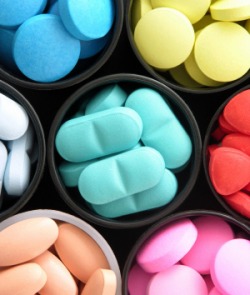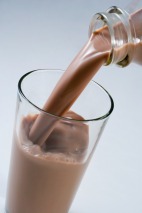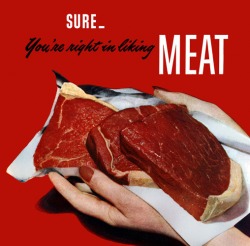 Even if you've been maintaining a healthy diet (good for you), the truth is that some nutrients are harder to get than others. This can be due to external factors such as natural scarcity, or internal factors such as difficulty absorbing. Men's Health's Jason Stevenson recently published a useful report on such nutrients. Luckily, once you recognize this issue, the fix is simple. Whether you choose to take a multivitamin or adjust your diet accordingly, these are 5 nutrients you should pay extra attention to ( source): Vitamin DThis vitamin's biggest claim to fame is its role in strengthening your skeleton. But vitamin D isn't a one-trick nutrient: A study in Circulation found that people deficient in D were up to 80 percent more likely to suffer a heart attack or stroke. The reason? D may reduce inflammation in your arteries. The shortfall: Vitamin D is created in your body when the sun's ultraviolet B rays penetrate your skin. Problem is, the vitamin D you stockpile during sunnier months is often depleted by winter, especially if you live in the northern half of the United States, where UVB rays are less intense from November through February. Case in point: When Boston University researchers measured the vitamin D status of young adults at the end of winter, 36 percent of them were found to be deficient. Hit the mark: First, ask your doctor to test your blood levels of 25-hydroxyvitamin D. "You need to be above 30 nanograms per milliliter," says Michael Holick, M.D., Ph.D., a professor of medicine at Boston University. Come up short? Take 1,400 IU of vitamin D daily from a supplement and a multivitamin. That's about seven times the recommended daily intake for men, but it takes that much to boost blood levels of D, says Dr. Holick. MagnesiumThis lightweight mineral is a tireless multitasker: It's involved in more than 300 bodily processes. Plus, a study in the Journal of the American College of Nutrition found that low levels of magnesium may increase your blood levels of C-reactive protein, a key marker of heart disease. The shortfall: Nutrition surveys reveal that men consume only about 80 percent of the recommended 400 milligrams (mg) of magnesium a day. "We're just barely getting by," says Dana King, M.D., a professor of family medicine at the Medical University of South Carolina. "Without enough magnesium, every cell in your body has to struggle to generate energy." Hit the mark: Fortify your diet with more magnesium-rich foods, such as halibut and navy beans. Then hit the supplement aisle: Few men can reach 400 mg through diet alone, so Dr. King recommends ingesting some insurance in the form of a 250 mg supplement. One caveat: Scrutinize the ingredients list. You want a product that uses magnesium citrate, the form best absorbed by your body. Vitamin B12Consider B12 the guardian of your gray matter: In a British study, older people with the lowest levels of B12 lost brain volume at a faster rate over a span of 5 years than those with the highest levels. The shortfall: Even though most men do consume the daily quota of 2.4 micrograms, the stats don't tell the whole story. "We're seeing an increase in B12 deficiencies due to interactions with medications," says Katherine Tucker, Ph.D., director of a USDA program at Tufts University. The culprits: acid-blocking drugs, such as Prilosec, and the diabetes medication metformin. Hit the mark: You'll find B12 in lamb and salmon, but the most accessible source may be fortified cereals. That's because the B12 in meat is bound to proteins, and your stomach must produce acid to release and absorb it. Eat a bowl of 100 percent B12-boosted cereal and milk every morning and you'll be covered, even if you take the occasional acid-blocking med. However, if you pop Prilosec on a regular basis or are on metformin, talk to your doctor about tracking your B12 levels and possibly taking an additional supplement. PotassiumWithout this essential mineral, your heart couldn't beat, your muscles wouldn't contract, and your brain couldn't comprehend this sentence. Why? Potassium helps your cells use glucose for energy. The shortfall: Despite potassium's can't-live-without-it importance, nutrition surveys indicate that young men consume just 60 percent to 70 percent of the recommended 4,700 mg a day. To make matters worse, most guys load up on sodium: High sodium can boost blood pressure, while normal potassium levels work to lower it, says Lydia A. L. Bazzano, M.D., Ph.D., an assistant professor of epidemiology at Tulane University. Hit the mark: Half an avocado contains nearly 500 mg potassium, while one banana boasts roughly 400 mg. Not a fan of either fruit? Pick up some potatoes—a single large spud is packed with 1,600 mg. IodineYour thyroid gland requires iodine to produce the hormones T3 and T4, both of which help control how efficiently you burn calories. That means insufficient iodine may cause you to gain weight and feel fatigued. The shortfall: Since iodized salt is an important source of the element, you might assume you're swimming in the stuff. But when University of Texas at Arlington researchers tested 88 samples of table salt, they found that half contained less than the FDA-recommended amount of iodine. And you're not making up the difference with all the salt hiding in processed foods—U.S. manufacturers aren't required to use iodized salt. The result is that we've been sliding toward iodine deficiency since the 1970s. Hit the mark: Sprinkling more salt on top of an already sodium-packed diet isn't a great idea, but iodine can also be found in a nearly sodium-free source: milk. Animal feed is fortified with the element, meaning it travels from cows to your cereal bowl. Not a milk man? Eat at least one serving of eggs or yogurt a day; both are good sources of iodine.
 The best workout drink? In my previous post, I talked about the importance of selecting good meats in diet to maximize your workouts. Equally important, if not more, is proper hydration. Humans can live weeks without food, but only last a few days at most without water. A strenuous workout can cost almost 1.5 liters of water in sweat. So what's the best to drink while working out? Everyone knows about Gatorade, and water is always a good fallback. Interestingly enough, chocolate milk has been shown to be a good choice! ( CBS News) In fact, Michael Phelps can be seen drinking Carnation Instant Breakfast between races. Sports drinks include carbs to include the glycogen loss associated with heavy exercise. Milk contains these carbs, but also includes proteins, which research shows increases glycogen uptake. "The findings suggest that chocolate milk has an optimal ratio of carbohydrates to protein to help refuel tired muscles," according to researcher Joel M. Stager, PhD, Indiana University. According to the study, athletes replenishing with chocolate milk were able to go 50% longer on a stationary bike test after they had been worked to exhaustion. Some newer energy drinks, such as Endurox, attempt to mimic the carb/protein ratios of chocolate milk, but fared poorly in performance testing. Researcher Jeanne D. Johnston, MA, says it may have to do with the different composition of the sugars in the milk. Another theory is that the sugars in the milk may be better absorbed in the gut than those in the Endurox. This is enough to convince me to at least try drinking chocolate during my next workout! ( source)
 For an athlete, meat is an essential part of good diet. It provides the protein and other nutrients needed to build and maintain muscle and strength. But meats also contain fats and cholesterol, both of which contribute to cardiovascular issues and potentially decreased performance. It is important to optimize the meat in your diet so you get the most benefits to muscularity while minimizing health risks. Some on the list, such as turkey and fish, aren't surprising. But some interesting meats such as Bison make a showing. Be sure to check out the full article by Dustin Driver 1) Buffalo (Bison)A hunk of buffalo has far less fat than steak and buffalo are generally grass-fed, which means healthier meat. Let’s compare burgers: Your typical lean hamburger (10% fat) contains about 0.32 oz (9 g) of fat. Buffalo burgers, on the other hand, contain less than half that, about 0.14 oz (4 g). Not bad for a tasty burger. There was a point when buffalo were endangered, but the beasts have made a comeback, especially on ranches. Today, buffalo meat is readily available in most grocery stores.
2) PorkPork chops used to be on the doctors’ hit list. Today, however, pork is “the other white meat” and is a healthy alternative to red meat. And when it’s eaten in reasonable quantities (8 oz), a pork chop can be quite good for you. Pork chops can be relatively lean, but they’re typically not as low-fat as chicken or fish. By contrast, however, a USDA, University of Wisconsin and Maryland study found that a 3 oz (85 g) serving of pork tenderloin contains 0.105 oz (2.98 g) of fat and that the same portion of skinless chicken breast contains 0.106 oz (3.03 g) of fat.
If chops are still your thing, look for lean ones, and trim the fat before you eat them. A typical pork chop, with the fat cut off, contains about 0.3 oz (8 g) of fat. Beware, however, of cured pork, like ham and bacon; both meats may contain nitrates and nitrites as preservatives, which have been linked to cancer.
3) ChickenWhite meat is much better for you than red -- that’s a well-known fact. As such, chicken (not deep-fried) is a great alternative to red meats. It’s low in fat -- without the skin -- and it’s pretty tasty if it’s prepared correctly. Chicken is a great source of protein and, as an added bonus, it’s less expensive than beef. But remember, there’s always the risk of E. coli infection when you’re dealing with chicken. Be sure to cook or heat it to an internal temperature of at least 165F to kill off the bugs.
Also, charred grilled chicken can contain some cancer-causing chemicals, such as heterocyclic amines, so limit your consumption of well-blackened chicken.
4) TurkeyThis big bird never saw it coming. Domestic turkey is a relatively recent addition to the world’s protein menu, and it’s great for you. Turkey is generally a white meat (turkey breast), but it packs more flavor than chicken, and its dark meat can be downright gamy. Turkey meat is also relatively low in fat: one 4.9 oz (140 g) serving of skinless roasted turkey contains about 0.25 oz (7 g) of fat.5) FishA properly cooked hunk of fish can be as satisfying as a great steak. Plus, many fish (typically salmon and tuna) are packed with omega-3 fatty acids, which have been linked to decreased rates of heart disease.Circulation published a study that suggests lean, white fish, such as cod, don’t provide the same health benefits as fattier fish do. Another extensive EPIC study found that people who eat lots of fish are less likely to develop colon cancer than those who don’t. But be careful: big fish like tuna can contain high levels of mercury, which is a poison to the human body.
So, how much fish can you eat and be safe? It depends. Avoid large fish that eat other fish -- tuna, swordfish and shark -- and stick to smaller fish, which tend to contain less mercury than bigger fish. Local levels of mercury vary; check with your nearby fish and game agency to see which fish contain high levels of mercury.
 Carbo loading is a pre-competition ritual shared by athletes in just about every sport. There's more to it than just eating a ton of carbs; do it right and you can get a competitive edge and a delicious meal in the process. Here's how: A brief historyGunvar Ahlborg was the Swedish physiologist that correlated glycogen (carbs in liver and muscle) levels with performance. Ahlborg also discovered the phenomenon of 'supercompensation,' in which muscles try to store up high amounts of glycogen in response to extreme glycogen depletion.The Ahlborg Method
By exploiting supercompenstation using the Ahlborg Method, an athlete can maximize his/her glycogen levels. It's very simple:1. Perform an exhaustive workout one week before a long race (90 minutes-plus).
2. Consume a very low-carb diet (10%) for the next 3-4 days while training lightly.
3. Consume a very high-carb diet (90%) the next 3-4 days while continuing to train lightlyThat's all there is too it! Glycogen metabolism needs to occur in the presence of oxygen to prevent lactic acid buildup. Taking a nitric oxide supplement such as Force Factor will increase blood oxygen levels to complement increased glycogen levels from a carbo load.Time it properly and you'll have plenty of glycogen to burn during an intense competition or workout. (source)
 If you're working out and eating properly, you're probably in good health. There's always more you can do to keep your body in healthy shape though; Men's Health recently published an article titled "The 5 Supplements Your Heart Needs," by Amanda Junker, which covered nutritional supplements not usually associated with body building, but are key components to cardio health. The important part of the article are posted below ( source). For those of you using or thinking of using Force Factor, they also make a multivitamin and omega-3 product along with their NO supplement. full article: http://www.menshealth.com/spotlight/heart/supplements.php Aspirin Aspirin is an anti-inflammatory medicine that thins your blood, making it more difficult for your body to develop clots that can cause heart attacks. A Canadian study shows aspirin is especially effective in men. The reason why isn't confirmed, but researchers speculate it's because "blood clots tend to form in bigger blood vessels in men, and aspirin could have bigger efficacy in these larger cells more readily," says Don Sin, M.D., of University of British Columbia, one of the study's researchers.Omega-3 This fatty acid is found in fish, and it can be helpful in balancing blood lipids such as cholesterol and triglycerides. "Fish oil is helpful for people who have high triglycerides or who are at risk of heart disease," says Charles Campbell, M.D., clinical cardiologist and director of inpatient services at the University of Kentucky. Studies show Omega-3 can help prevent heart attack because it slows the build-up of plaque in the arteries. You can get pure fish oil in capsule form, but that can be expensive, and eating more fish will do more to improve your total health. "The best way to treat triglycerides is to treat metabolic syndrome with diet and exercise—prevention starts there," he says.Vitamin D D can determine your risk of heart attack, according to a recent Framington Heart Study. "Vitamin D deficiency is associated with increased cardiovascular risk, above and beyond established cardiovascular risk factors," said Thomas J. Wang, M.D., assistant professor of medicine at Harvard Medical School in Boston, Mass. The higher risk was particularly evident among individuals with high blood pressure.Coenzyme Q 10 "CoQ10 has shown to increase heart contractility [the performance of cardiac muscles]," says Dr. Campbell. A bonus: It may improve muscle function throughout your whole body. Preliminary research suggests that CoQ10 causes small decreases in blood pressure (systolic and possibly diastolic), according to the Mayo Clinic. Low blood levels of CoQ10 have been found in people with hypertension, although it is not clear if CoQ10 "deficiency" is a cause of high blood pressure.Niacin "More men die from low good cholesterol than high bad cholesterol—and niacin boosts that HDL ‘good cholesterol,'" says Dr. Berkowitz. "HDL is a clearing mechanism to get rid of LDL or bad cholesterol, it's like the garbage truck of the system," says Berkowitz. "Boosting HDL facilitates the transport of cholesterol and triglycerides so they can be extracted out of body." The downside: It must be taken at very high doses to be effective, so side effects like flushing and diarrhea are common. Use this like a drug with a doctor's recommendation.
|






 RSS Feed
RSS Feed